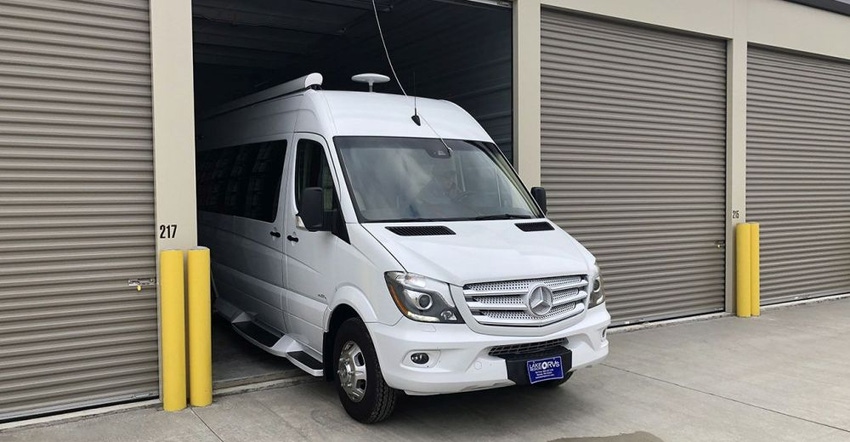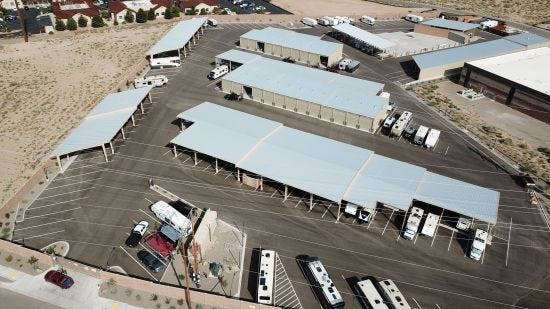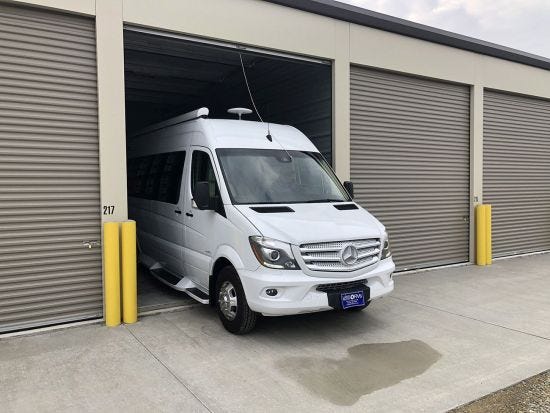The coronavirus has spurred a surge in the sale of recreational vehicles, which can translate to an amazing opportunity for the enterprising self-storage operator. If you’re interested in building large units to accommodate boats and RVs, here’s insight that should help.

During the coronavirus pandemic, sales of of boats and RVs are booming. In fact, 2020 is expected to be one of the highest years for such sales; and the prediction is that 2021 could be the best year ever. This increase in vehicle ownership has translated to a greater need for boat/RV-storage units. And that’s an excellent opportunity for the enterprising self-storage operator who has the space to add them.
If you’re interested in building boat/RV storage, here’s some insight to feasibility, construction and location considerations to get you started.
Feasibility
With traditional self-storage, one of the first questions owners and developers must ask themselves before they build is whether sufficient demand exists in a market to support a new project. This is less of a concern with boat/RV storage. Instead, the more relevant question is whether achievable rental rates will provide an acceptable return. To determine whether boat/RV storage is feasible in your area, you need to get a good handle on what you can charge for each particular unit or space.
The self-storage real estate investment trusts (REITs) don’t typically offer boat/RV storage, which both helps and hurts your chances of succeeding. On the positive side, because the REITs tend to steer clear of the large-unit market, you won’t have to compete with them on that front, and you’ll rarely face an oversupply situation. On the other hand, the REITs won’t be driving rent increases for boat/RV storage the way they are for traditional self-storage. So, while you need to raise rates at least once or twice per year, you’ll be on your own.
Still, adding boat/RV storage to an existing self-storage facility allows you generate revenue from your new service and even raise rents on your traditional storage units. I’ve seen owners do it. Within the first year or two of offering boat/RV storage, they’ve bumped rates 25 percent to 40 percent!
Why is that? Customers have fewer options when shopping for boat/RV storage vs. self-storage. It can be difficult for an owner or developer to find a low-priced piece of land that’s zoned properly and close enough to residential clusters to be attractive, so there are simply fewer facilities. Prospects often can’t go to the competitor up the street if they don’t like your price. In the end, they’ll pay.

An aerial view of Albuquerque RV and Boat Storage in Albuquerque, N.M.
Construction
Before you add boat/RV storage to an existing self-storage property or build a dedicated boat/RV facility, you need to decide the types of storage and amenities you want to offer. Will your units be full enclosed with a roll-up door, canopy-covered spaces or completely open parking? Will you provide storage only or include a wash bay, water/septic area, retail store, detailing service, etc.? These decisions will depend on the amount of land you have, the amount of money you want to invest, the needs of your market and the potential return on investment (ROI).
To accommodate large, class-A vehicles, you’ll need to build units that are 16 feet wide and about 50 feet deep. The eave height should be 16 feet to accommodate a 12-by-14-foot door. These buildings usually provide a decent ROI, but you can improve revenue if you downsize some units to attract customers who own smaller vehicles and boats. It’s important to note that the RVs being purchased this year aren’t large, 36- to 46-foot long, drivable models. They’re the drivable or towable class-B and -C models, which are more affordable and manageable.
For smaller units, you’ll want a 12-foot-wide bay, with lengths of 30 feet for boats or 40 feet for RVs. Consumers like these units because they’ll have room to store home items in addition to their “toys.” Enclosed units are preferred over canopy spaces for this reason. Fully enclosed units also reduce the risk of theft and minimize the chances that tenants will put their vehicle in the wrong spot, which can happen with canopy and open spaces.

A large, enclosed unit at Albuquerque RV and Boat Storage
Location Considerations
Often, the biggest hurdle in offering boat/RV storage is having or finding the right land. Keep in mind that in addition to storage space, you need room for these large vehicles to drive around and maneuver. If you’re adding to an existing self-storage facility, you may only have room for a few units or spaces, perhaps down one side of your property or in one section of building. It also isn’t unusual that the premium location you chose for self-storage is simply too precious to “spend” on large units.
One solution is to consider a less expensive satellite location to handle boats and RVs. This property could be unmanned and remotely managed from your self-storage office.
Look for a large parcel, around five to 10 acres. It doesn’t even have to be visible. It could be on a side road miles into the country. Though it wouldn’t be a good for traditional self-storage, it could be just the right fit for boat/RV storage.
Look around your area for a strategic spot. If your market has campgrounds or natural features like a state park or body of water, seek land near these attractions, ideally on a state road. Many boat/RV owners choose to travel state roads instead of the faster interstates.
If you’re concerned about the remote-management aspect to this, consider that COVID-19 has smashed the preconceived notion that we need to meet all our customers in person. There’s now wide acceptance of contactless rentals. Customers can use your website to rent and then access the facility with a digital code.
Opportunity Awaits
There are plenty of opportunities for boat/RV storage across this great country of ours. The key is having the land to do it. Once you determine you can build, don’t be afraid to raise rates to achieve the return you need. The pandemic has ruined a number of industries, but it’s only boosted the already robust boat/RV-storage business. Give this add-on profit center careful consideration, particularly as you plan to build your next self-storage facility.
Jamie Lindau is a self-storage owner and the national sales manager at Trachte Buildings Systems, which designs, manufactures and erects a full line of pre-engineered and customized steel self-storage systems, including single- and multi-story, portable storage, interior partition and corridor, and canopy boat/RV. He presents Trachte’s free “Building Blocks of Self-Storage” seminar in more than a dozen cities throughout North America every year.
About the Author(s)
You May Also Like





